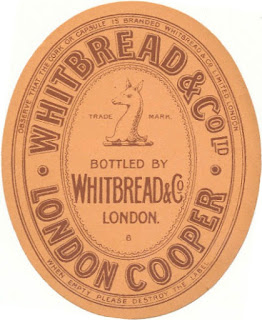Take, for example, Whitbread. In 1880, over a quarter of their production was Porter. By 1914, it was less than half that. The quantity Whitbread produced may have increased, but that was only because the total had more than trebled in those three decades or so.
X Ale’s share was also decreasing by the time WW I broke out owing to a big increase in the popularity of Whitbread’s Pale Ales. Combined, these had almost equalled the figure of X Ale by 1914. It didn’t help either X Ale or Porter that they were exclusively draught beers. Between 1901 and 1914, bottled beer increased from 25% to 50% of Whitbread’s sales.
After WW I, Porter’s popularity slumped. Looking at Whitbread’s figures, it seems that many Porter drinkers switched to Stout. That was, in the interwar period, of a similar strength to pre-war Porter. In 1922, Whitbread made 147,573 barrels of standard-strength Stout (1055º) and just 16,562 barrels of Porter.
| Whitbread X Ale and Porter output 1880 - 1914 | ||||||
| 1880 | 1900 | 1914 | ||||
| Beer | barrels | % | barrels | % | barrels | % |
| X Ale | 137,558 | 52.55% | 320,523 | 47.73% | 274,247 | 30.45% |
| Porter | 75,898 | 28.99% | 77,183 | 11.49% | 123,085 | 13.67% |
| Total | 261,785 | 671,579 | 900,636 | |||
| Sources: | ||||||
| Whitbread brewing records held at the London Metropolitan Archives, document numbers LMA/4453/D/09/075, LMA/4453/D/09/095, LMA/4453/D/09/108, LMA/4453/D/01/046, LMA/4453/D/01/065 and LMA/4453/D/01/079. | ||||||

No comments:
Post a Comment